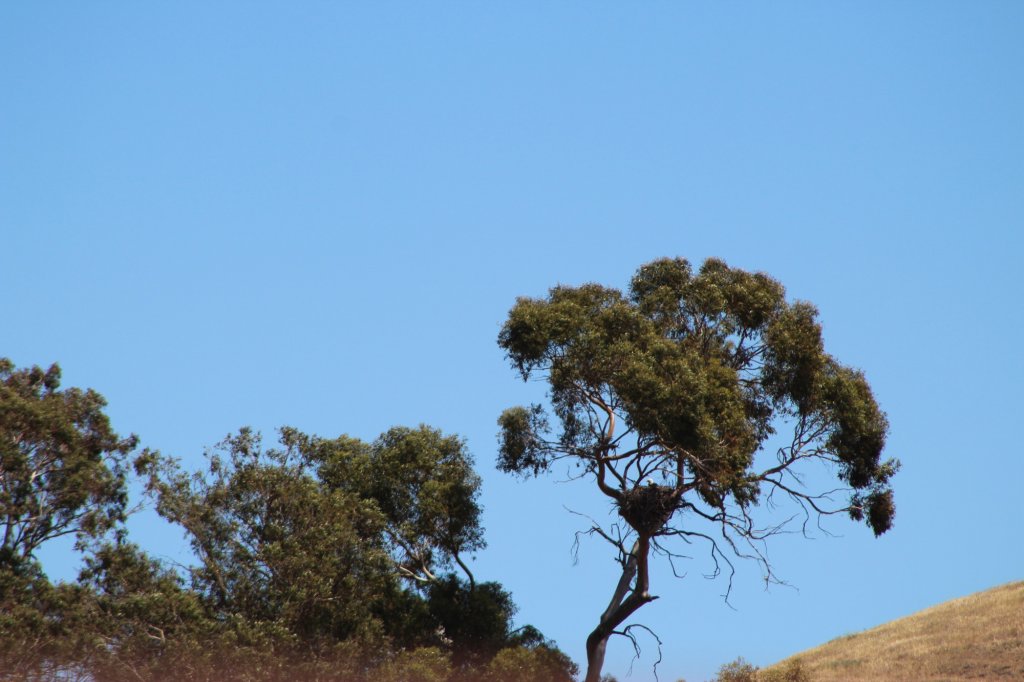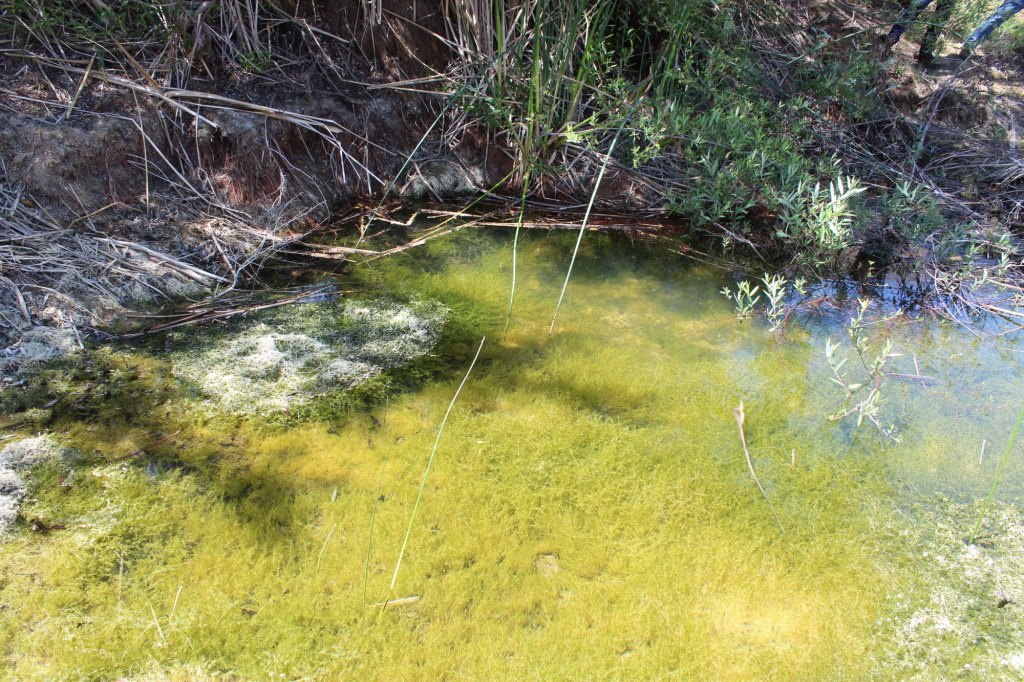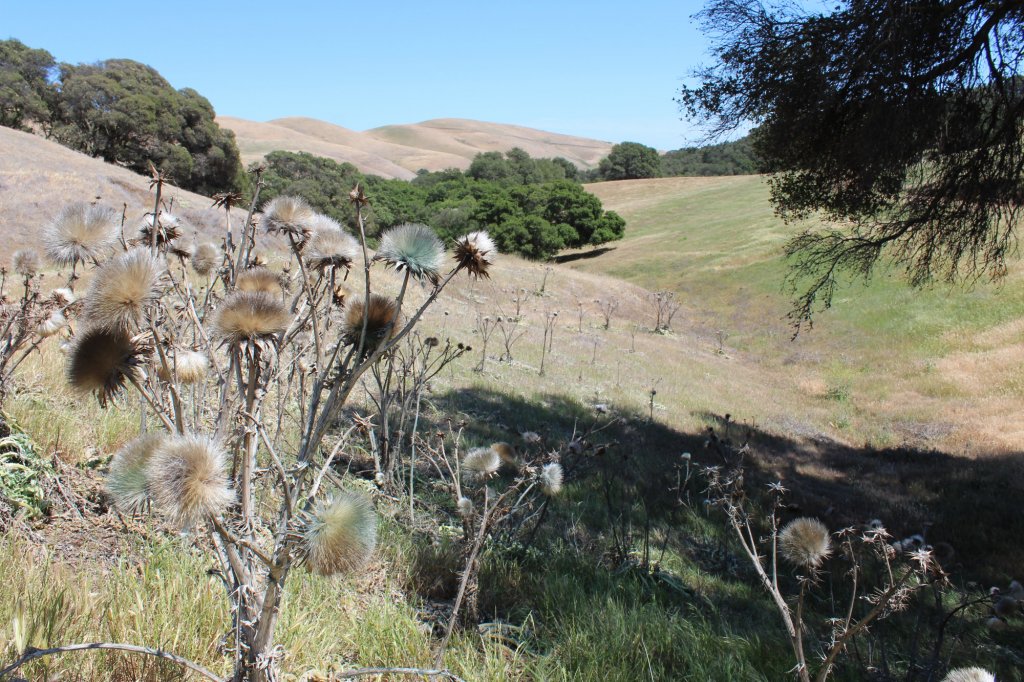Mitigation Banking at Ridge Top Ranch Provides Habitat for Endangered Frogs and Butterflies
A conservation bank provides habitat for endangered frogs and butterflies with credits available to offset mitigation needs.
High in the golden hills of southern Solano County, California red-legged frogs (Rana draytonii) hop through the network of restored ponds scattered around the expansive Ridge Top Ranch Wildlife Conservation Bank property. The ponds act as a wildlife corridor, constructed to allow the frogs to move freely throughout the ranch’s 750 acres. Ridge Top Ranch LLC is a mitigation bank sponsor, offering U.S. Fish and Wildlife Service mitigation credits for both the California red-legged frog (CRLF; Rana draytonii) and Callippe silverspot butterfly (CSB; Speyeria callippe callippe). WRA, Inc. worked with the bank sponsor and regulatory agencies to entitle the ranch as an approved wildlife conservation bank and created habitat for the two Federal-listed species. The unique project has been a huge success.
Mitigation banking is a win for conservation
Similar to carbon cap and trade, mitigation and conservation banking allows regulators to require large developers to buy mitigation credits in order to offset negative environmental impacts associated with large projects. This project turned expansive ranching land and constructed cattle ponds into ideal breeding habitat for these species—and others—to thrive.
WRA has provided biological assistance and regulatory guidance to the bank sponsor since the idea of creating a bank was presented in 2010. Mandatory mitigation projects make up a large percentage of conservation work in the Bay Area and are responsible for significant ecological benefits for many species and habitats. Sponsors such as Ridge Top Ranch LLC provide the land and resources necessary to create habitat for vulnerable species. WRA uses its expertise to guide sponsors through the process of development, permitting and credit sales for this important conservation work from start to finish.
California red-legged frogs translocated to restored pond
Prior to successful WRA translocation efforts in the past decade, CRLFs were not known to occur on this property. Historic land use practices had rendered the area unsuitable for frogs to breed and prosper, and the restored cattle ponds that now serve as integral wetland habitat for these frogs sat idle before this project began. In 2012, WRA spearheaded a successful translocation project that brought frog eggs from off-site ponds to the cattle ponds on the property that had been restored to provide ideal habitat for the species. This unusual and rather revolutionary tactic solved the persistent issue of localization imprinting that plagued translocations in the past. Localization imprinting causes frogs to leave the translocation area in order to return to the ponds of their birth, causing the loss of adult frogs over time. By translocating eggs instead of adult frogs WRA biologists were able to work with natural biological cycles to keep frogs in the area for the long term so that they can successfully breed. There is now a thriving population of frogs that is growing each year, and WRA oversees the continued monitoring of this population.
In order to establish the ranch as a bank, WRA initially prepared a Bank Prospectus and Bank Enabling Instrument for the U.S. Fish and Wildlife Service (USFWS). WRA then submitted a translocation proposal to USFWS that was approved and resulted in over 100 juvenile frogs spotted in the two ponds the following year after translocation. Now that initial translocation efforts have proven fruitful, WRA has shifted to monitoring the population. Monitoring includes annual land management planning to maintain the habitat for the vulnerable species and annual reporting to the USFWS.
Invasive weed removal benefits butterflies
In addition to habitat restoration to support CRLFs, WRA carried out invasive species control efforts to clear the land of invasive weeds such as artichoke thistle (Cyanara cardunculus), yellow star thistle (Centurea solstitialis), and distaff thistle (Carthamus lanatus). Removal of these weeds with targeted herbicide application improves the habitat for Federal-listed species and improves their ability to feed and breed. Weed control allows for frogs to move easily throughout the area and allows for native plants to grow, which are important to the life cycle of CSBs.
The butterflies are well-adapted to this region. The particular subspecies found at the ranch has wings that are a darker shade in order to absorb the limited sunlight in the foggy bay area, aiding in its thermoregulation abilities. The Callippe silverspot caterpillars feed on California golden violets (Viola pedunculata). The flowers grow close to the ground, and by the time the caterpillars metamorphosize into butterflies in the late summer, most of the flowers have already dried up, forcing the butterflies to rely on chemical cues to locate the plant. The aggressive artichoke thistle is a pervasive weed that was an ongoing problem around the property. Unappealing to grazing cows, the weeds will grow so large that they will choke out the low-lying flowers that the butterflies rely on for survival. The artichoke thistle also competes with other grasses, and if uncontrolled, will take over the entire hillside. Thanks to targeted weed abatement efforts, the weed is being controlled to enhance CSB habitat.
Ongoing monitoring protects restored habitat
As part of ongoing monitoring, WRA will ensure that established performance standards are being met, and that the conservation bank is functioning as essential habitat for these species. Banking provides invaluable resources for conservation work that keeps the ecosystem healthy and functioning well beyond initial restoration projects. WRA experts help clients navigate every step of the process, from mitigation credit sales to permitting, restoration design and performance monitoring.
Contact us
For more information about Ridge Top Ranch or to inquire about credit sales, contact us.






